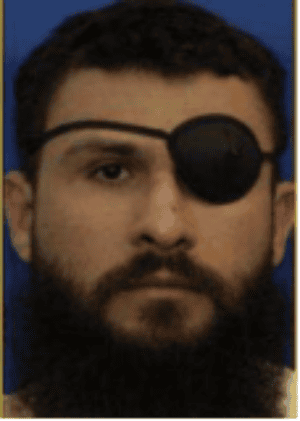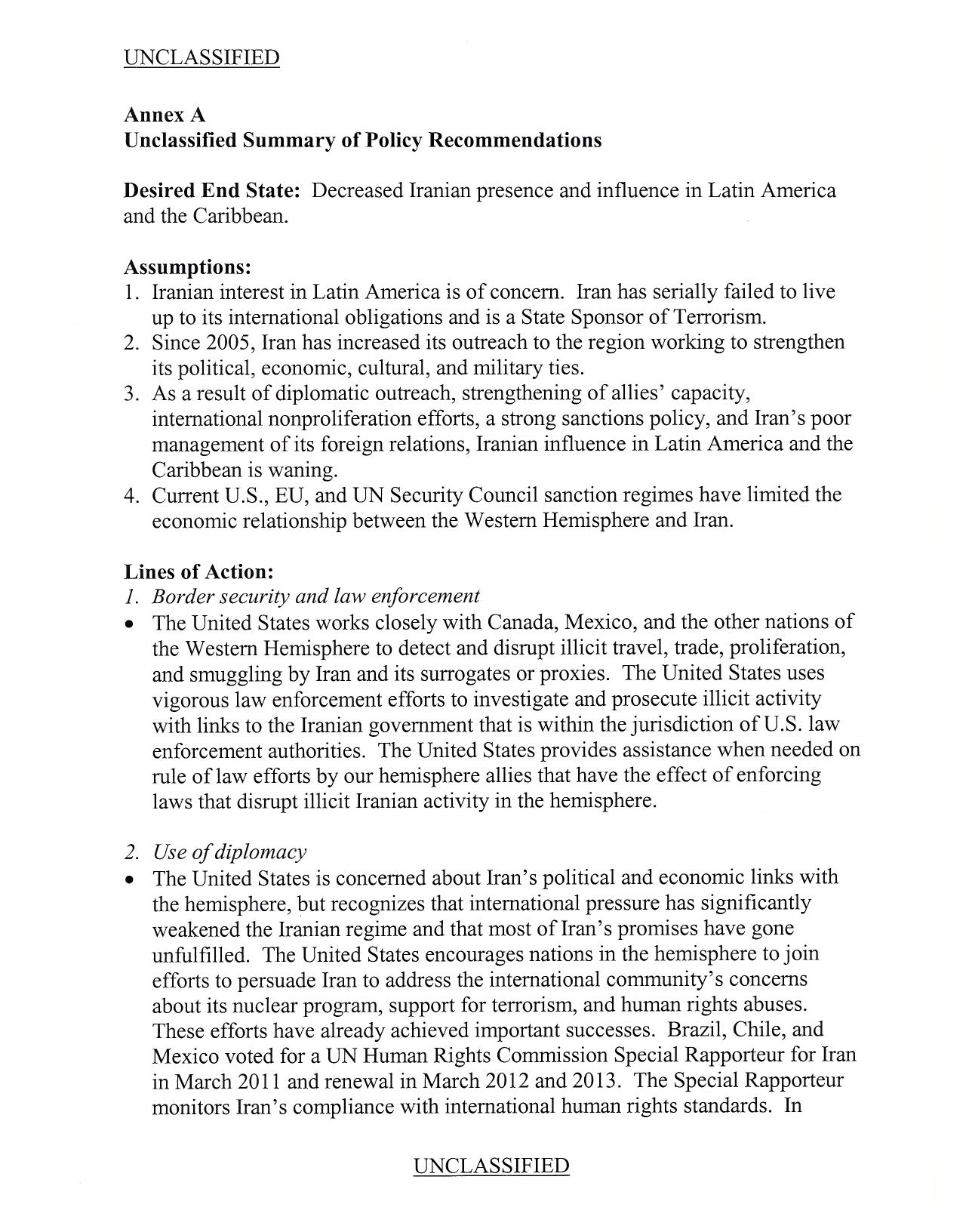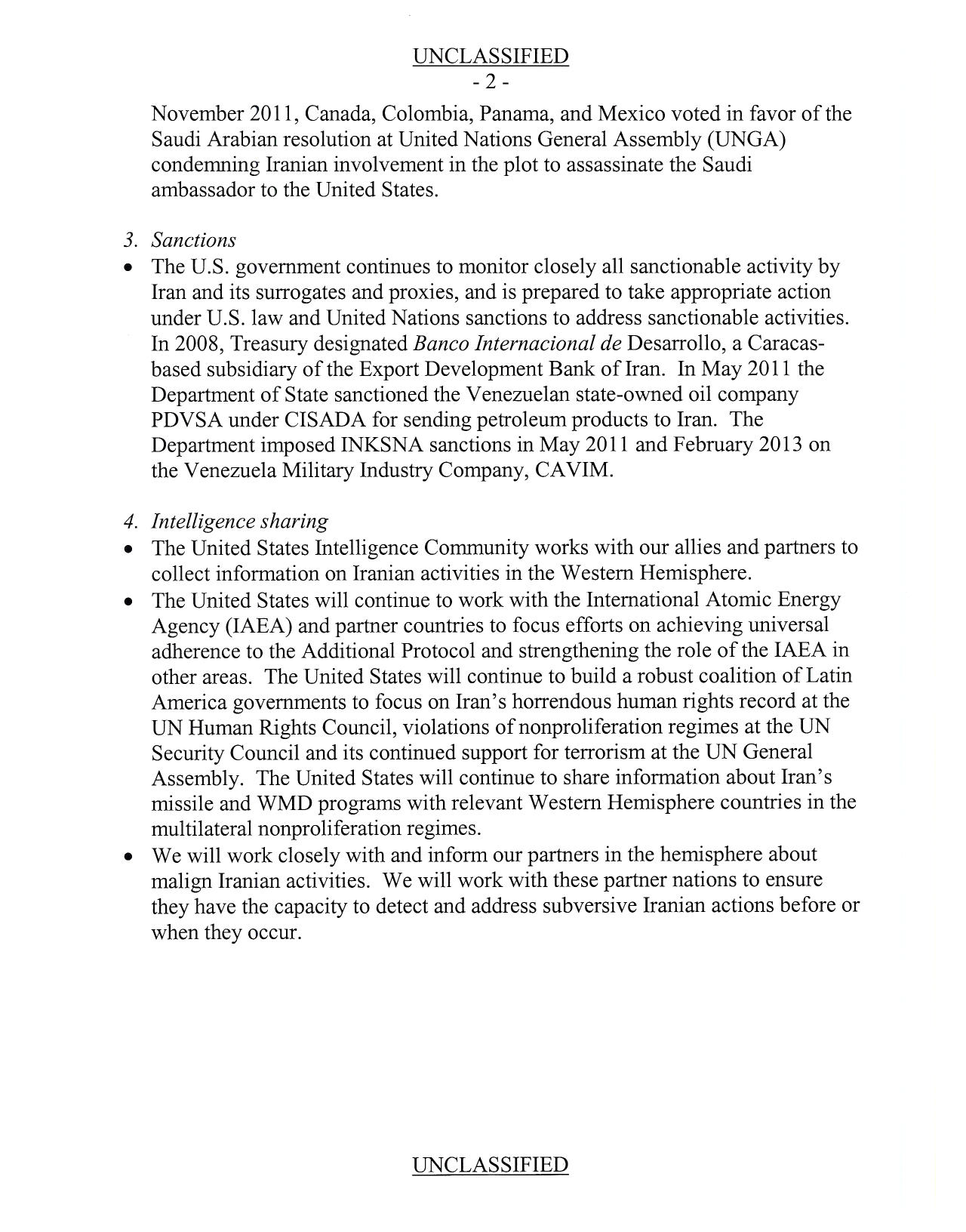And for the first time, he is getting a hearing. So who is he? 61 remain now and 20 are approved for transfer…where is undetermined.
LWJ: The US government has released an unclassified profile of the jihadist known as Abu Zubaydah, who is held at the Guantanamo Bay detention facility. Abu Zubaydah’s case is currently being evaluated by the Periodic Review Board (PRB), which was established in 2011 “to review whether continued detention of particular individuals held at Guantanamo remains necessary to protect against a continuing significant threat to the security of the United States.”
Abu Zubaydah has been at the center of controversy for years. He was one of the first detainees subjected to the CIA’s so-called enhanced interrogation techniques, including waterboarding, in 2002.

Some argue that he was not really a senior al Qaeda operative at the time of his capture and that his importance was exaggerated by the US intelligence community during the Bush administration. One version of Abu Zubaydah’s story, citing excerpts from his diary and other fragmentary evidence, holds that he never swore bayat (oath of allegiance) to Osama bin Laden and was merely an independent jihadist facilitator.
The US government’s unclassified summary tells a different story, citing several key pieces of evidence that tie Abu Zubaydah to al Qaeda’s senior leaders and the terror group’s global operations. Abu Zubaydah allegedly “played a key role in al Qaeda’s communications,” “closely interacted” with Osama bin Laden’s “second-in-command,” enlisted al Qaeda operatives in planned attacks against Israel, worked with 9/11 planner Khalid Shaykh Mohammed in 2002, and may have had foreknowledge of al Qaeda’s three most successful attacks between August 1998 and September 2001. The PRB summary also notes that he has been convicted in absentia in Jordan for his well-known role in the so-called millennium terror plots.
Abu Zubaydah “possibly had some advanced knowledge of the bombings of the US Embassies in Kenya and Tanzania in 1998 and the USS Cole bombing in 2000,” according to the government’s PRB summary. He was also “generally aware of the impending 9/11 attacks and possibly coordinated the training at Khaldan camp of two of the hijackers.”
The 1998 US Embassy Bombings and the attack on the USS Cole in 2000 were al Qaeda’s two most effective operations prior to 9/11. It is doubtful that a truly independent actor could have had “some knowledge” of these plots, as well as be “generally aware” of the 9/11 attacks beforehand, given al Qaeda’s penchant for secrecy and compartmentalized planning.
In addition, the two future 9/11 hijackers were not the only al Qaeda operatives thought to have trained at Khaldan camp, which Abu Zubaydah helped oversee.
According to declassified and leaked files prepared by Joint Task Force – Guantanamo (JTF-GTMO), as well as other reports, numerous al Qaeda operatives trained at Khaldan. Trainees at Khaldan included: Ramzi Yousef (the nephew of Khalid Shaykh Mohammed and also the chief bomb maker for the 1993 World Trade Center attack, as well as the point man for a plot to bring down airliners in 1995), Mohamed al-‘Owhali (convicted for his role in the 1998 US Embassy Bombings), Zacarias Moussaoui (who was slated to take part in the 9/11 hijackings, or a follow-on al Qaeda plot, prior to his arrest in Aug. 2001), and Richard Reid (al Qaeda’s would-be shoe bomber in December 2001), among others. Abu Zubaydah would later argue before a tribunal at Guantanamo that he taught “defensive jihad,” as opposed to “offensive jihad,” and was not hostile to the US and its partners. The dossiers of Khaldan’s graduates, as well as many other facts, undermine this argument.
According to the summary presented to the PRB, Abu Zubaydah “played a key role in al Qaeda’s communications with supporters and operatives abroad and closely interacted with al Qaeda’s second-in-command at the time, Abu Hafs al Masri.”
The 9/11 Commission described Abu Hafs al Masri, who was killed in an American airstrike in late 2001, as bin Laden’s “chief of operations” prior to 9/11. Bin Laden and Abu Hafs “occupied undisputed leadership positions atop al Qaeda’s organizational structure.” The 9/11 Commission continued: “Within this structure, al Qaeda’s worldwide terrorist operations relied heavily on the ideas and work of enterprising and strong-willed field commanders who enjoyed considerable autonomy.” Therefore, a senior jihadist could be part of al Qaeda’s organization and still maintain “considerable autonomy” – a detail worth remembering when evaluating Abu Zubaydah’s dossier.
The 9/11 Commission cited the career of Khalid Shaykh Mohammed (KSM), the chief organizer of the 9/11 hijackings, as an example of how al Qaeda’s hierarchy worked. Although KSM didn’t swear bayat to bin Laden (or so KSM claimed after being captured), he still planned the 9/11 attacks under the watchful eye al Qaeda’s most senior officials. Unlike Abu Zubaydah, no one seriously disputes KSM’s al Qaeda role. According to multiple reports, Abu Zubaydah divulged during his first days in US custody that one of KSM’s aliases was “Mukhtar.” Zubaydah also told FBI officials that KSM played a key role in the 9/11 hijackings. Again, we are left to wonder how someone supposedly outside of al Qaeda’s orbit could have known such important details concerning the secretive group’s inner workings.
In fact, according to the PRB summary and other files, Abu Zubaydah worked directly with KSM.
“Following 9/11,” the PRB summary reads, “[Abu Zubaydah] took a more active role in attack preparations, sending operatives to al Qaeda senior member Khalid Shaykh Muhammad…to discuss the feasibility of exploding a radiological device in the United States, and supporting remote-controlled bomb attacks against US and Coalition Forces in Afghanistan.”
The first part of the sentence refers to Abu Zubaydah’s involvement with Jose Padilla and Binyam Mohamed. They conceived a far-fetched plan to use a dirty bomb inside the US. KSM allegedly thought that their idea was foolish and so he directed one or both of them to consider setting fire to high rise buildings using natural gas instead. Zubaydah reportedly revealed details about Padilla and Mohamed while in US custody. Padilla was arrested in Chicago in May 2002 and eventually convicted on terrorism charges. Mohamed was detained in Pakistan and then held elsewhere before being sent to Guantanamo. Mohamed was transferred to the UK in 2009.
It is telling that Abu Zubaydah was able to seamlessly pass Padilla and Mohamed on to KSM, who was attempting to strike the US again just months after the 9/11 hijackings.
The second part of the sentence above from the PRB’s summary (“supporting remote-controlled bomb attacks” in Afghanistan) is a reference to Abu Zubaydah’s “Martyrs Brigade.” According to leaked JTF-GTMO files, the “Martyrs Brigade” was jointly created by Abu Zubaydah and Abdul Hadi al Iraqi, a top al Qaeda military commander who answered directly to Osama bin Laden. Known al Qaeda members joined the team, which was planning to travel back to Afghanistan to fight US and Coalition forces.
The PRB file notes that Abu Zubaydah “most actively plotted attacks against Israel, enlisting operatives from various militant groups, including al Qaeda, to conduct operations in Israel and against Israeli interests abroad.”
A brief biography released by the Office of the Director of National Intelligence (ODNI) in 2006 contained additional allegations regarding his anti-Israeli plotting. According to that biography, Abu Zubaydah had “enlisted” the help of Abu Musab al Zarqawi, who would go on to establish al Qaeda in Iraq, to find “a smuggling route into Israel for moving persons and materials.” Abu Zubaydah had previously helped Zarqawi and dozens of others escape from Afghanistan into Iran in late 2001. Abu Zubaydah raised $50,000 from Saudi donors for his planned attacks in Israel. The money was passed to senior al Qaeda leadership, according to the ODNI’s biography, and may have even been repurposed for the 9/11 plot.
The millennium plots
Abu Zubaydah’s role in various planned terrorist attacks in late 1999 and early 2000 is well known. Khaldan’s graduates were directly responsible for some of the plots.
Abu Zubaydah “was convicted in absentia by the Jordanian Government for his role in planning attacks against Israeli, Jordanian, and Western targets during the Millennium time frame in Jordan,” the newly released PRB file reads.
The 9/11 Commission discussed the millennium plots in Jordan at length in its final report. Jordanian authorities unraveled the plans beginning on Nov. 30, 1999, when they intercepted a telephone call from Abu Zubaydah to an operative known as Abu Hoshar.
“The time for training is over,” Abu Zubaydah said.
The Jordanians suspected, according to the 9/11 Commission, “that this was a signal for Abu Hoshar to commence a terrorist operation.” Jordanian police then arrested 16 jihadists, including Abu Hoshar and his comrade Raed Hijazi. [See LWJ report, Jordan rearrests millennium bombings plotter.]
By late 1998, Abu Hoshar and Hijazi had begun planning to attack multiple sites frequented by Western tourists. “Hijazi and Abu Hoshar cased the intended targets and sent reports to Abu Zubaydah, who approved their plan,” according to the 9/11 Commission. Hijazi stockpiled the ingredients necessary to make the bombs their plan required.
Hijazi and Abu Hoshar contacted another alleged al Qaeda operative, Khalid Deek, in early 1999. They acquired a copy of the Encyclopedia of Jihad, a terrorist manual authored by Deek. The 9/11 Commission reported what happened next. In June 1999, “with help from Deek, Abu Hoshar arranged with Abu Zubaydah for Hijazi and three others to go to Afghanistan for added training in explosives.”
Then, in late November 1999, “Hijazi reportedly swore before Abu Zubaydah the bayat [oath of allegiance] to Bin Laden, committing himself to do anything Bin Laden ordered.”
How could Abu Zubaydah accept Hijazi’s blood oath to Osama bin Laden if he wasn’t really part of al Qaeda? This is one of many details that doesn’t make sense if Abu Zubaydah remained apart from al Qaeda.
Another one of the plots extended all the way into the US.
Ahmed Ressam, who was trained at the Khaldan camp, traveled from Canada to the US in late 1999 with the intent to bomb the Los Angeles International Airport (LAX). Ressam was arrested on Dec. 14, 1999 after customs officials discovered that his vehicle contained hidden explosives.
Ressam would later explain Abu Zubaydah’s role to the FBI. Ressam’s testimony was included in the Aug. 6, 2001 Presidential Daily Brief (PDB) delivered to President George W. Bush.
“The millennium plotting in Canada in 1999 may have been part of Bin Laden’s first serious attempt to implement a terrorist strike in the US,” the PDB read. “Convicted plotter Ahmed Ressam has told the FBI that he conceived the idea to attack the Los Angeles International Airport himself, but that Bin Laden lieutenant Abu Zubaydah encouraged him and helped facilitate the operation.” Ressam added that Bin Laden “was aware of the Los Angeles operation” and Abu Zubaydah “was planning his own US attack” as early as 1998.
An extensive dossier
The unclassified PRB file deals with just some of the known or suspected details of Abu Zubaydah’s career. There is much additional evidence tying him to al Qaeda’s global enterprise. At a minimum, however, the file indicates that the officials representing the US government in the PRB process continue to view Abu Zubaydah as well-placed figure in al Qaeda’s network. This is true whether Abu Zubaydah swore his allegiance to Osama bin Laden or not, as the intelligence shows that he consistently worked with al Qaeda’s most senior operatives.
Note: The spelling of al Qaeda has been made consistent throughout this article and therefore differs from how it is spelled in some of the US government’s files.


















